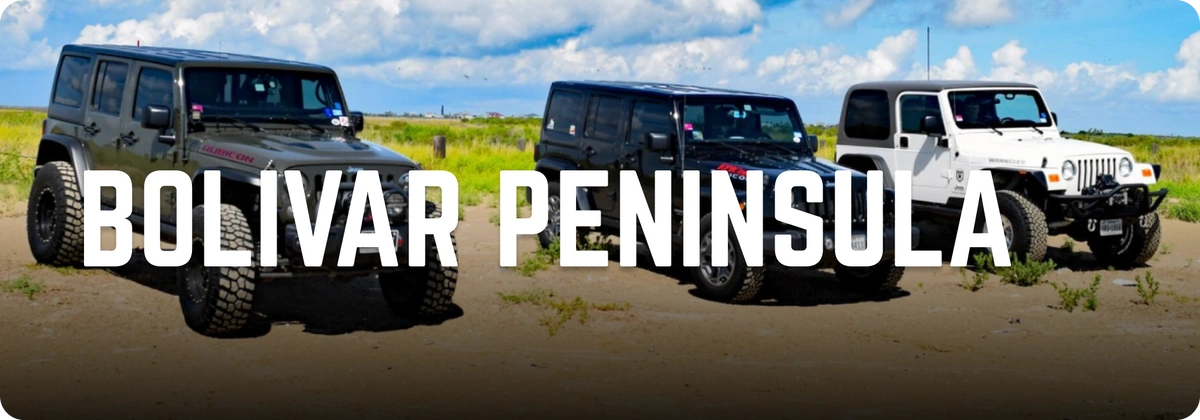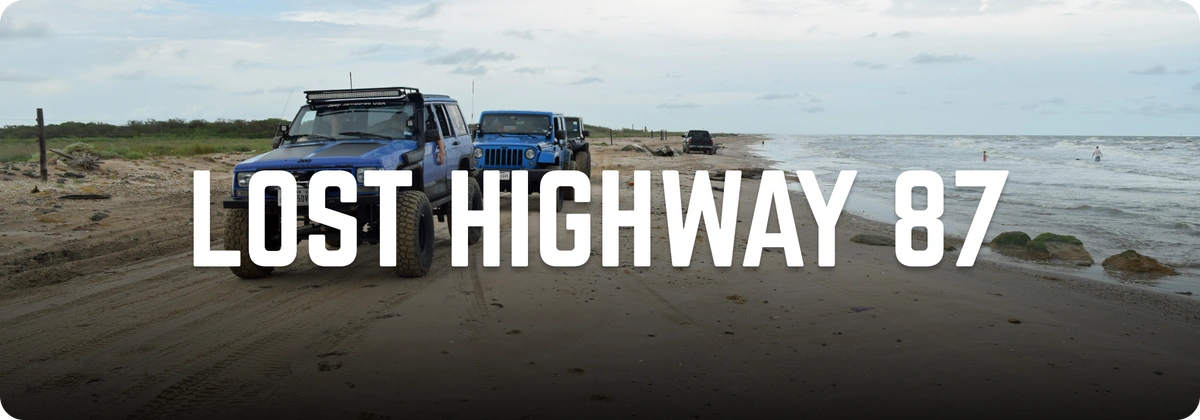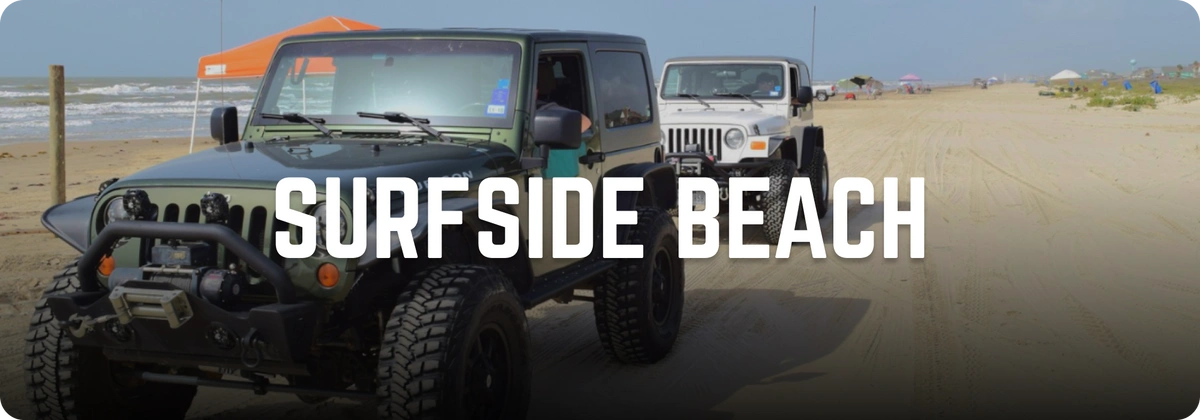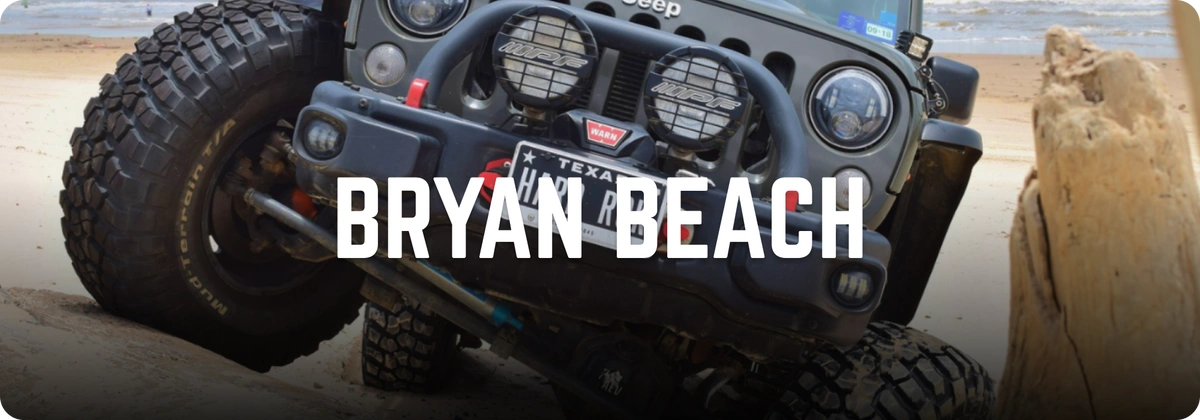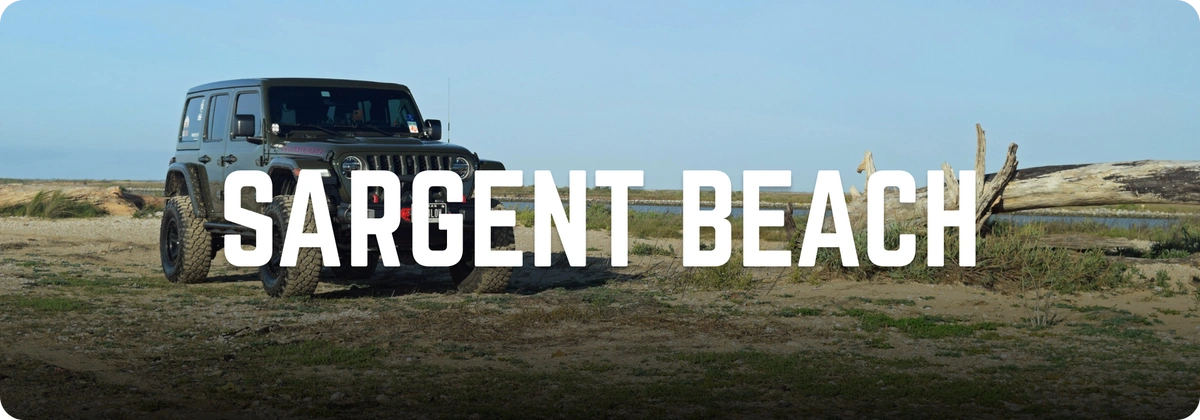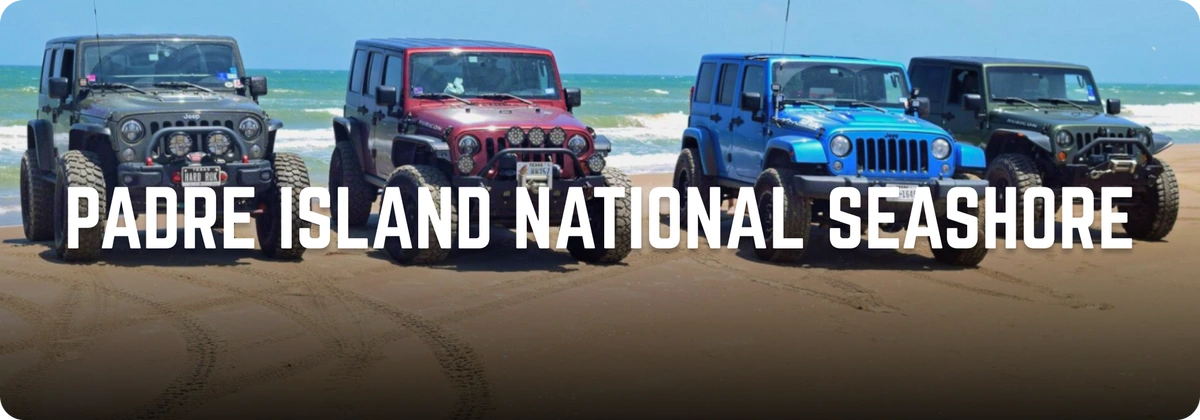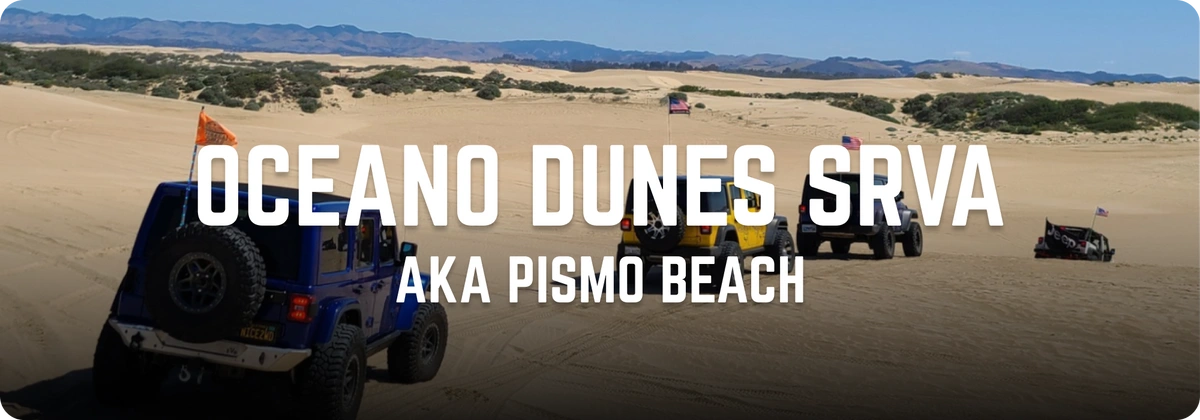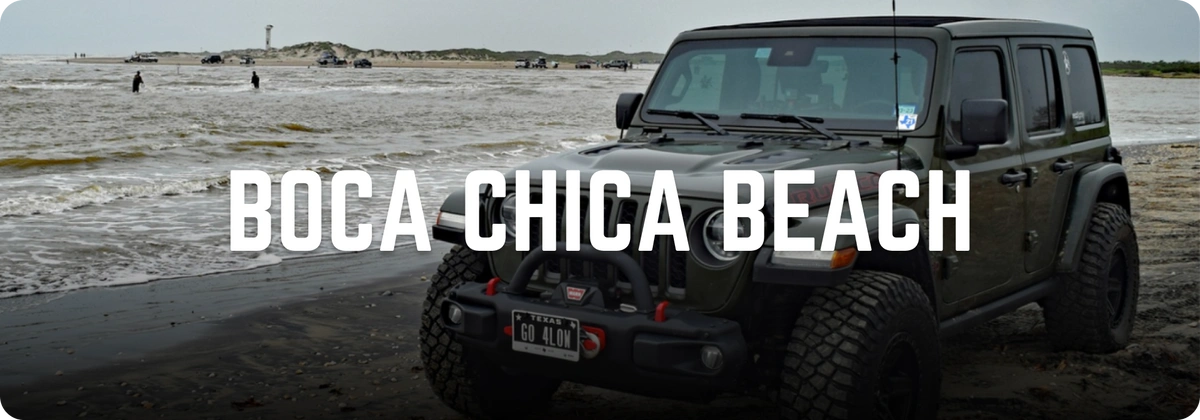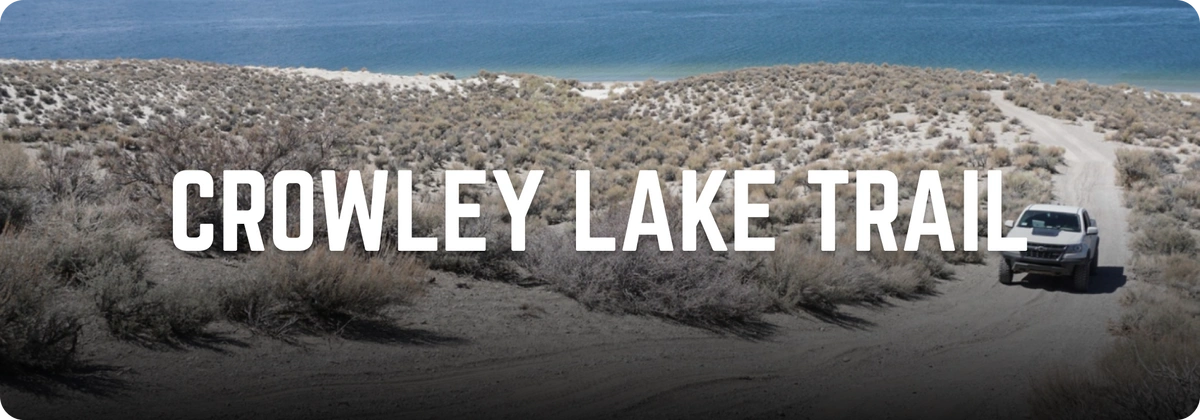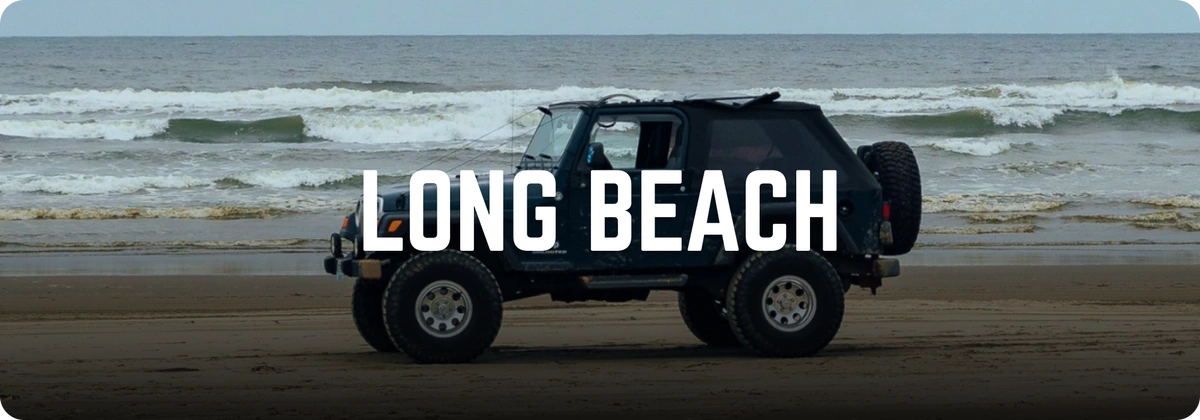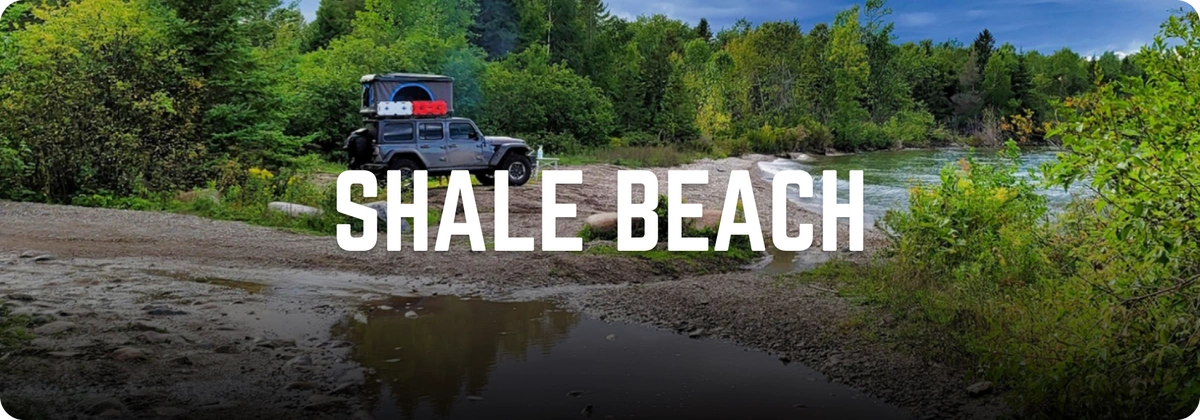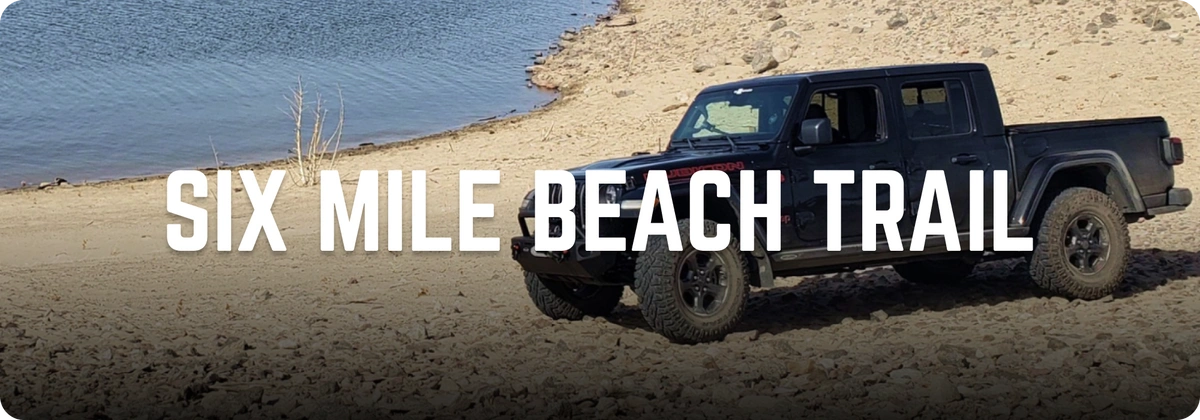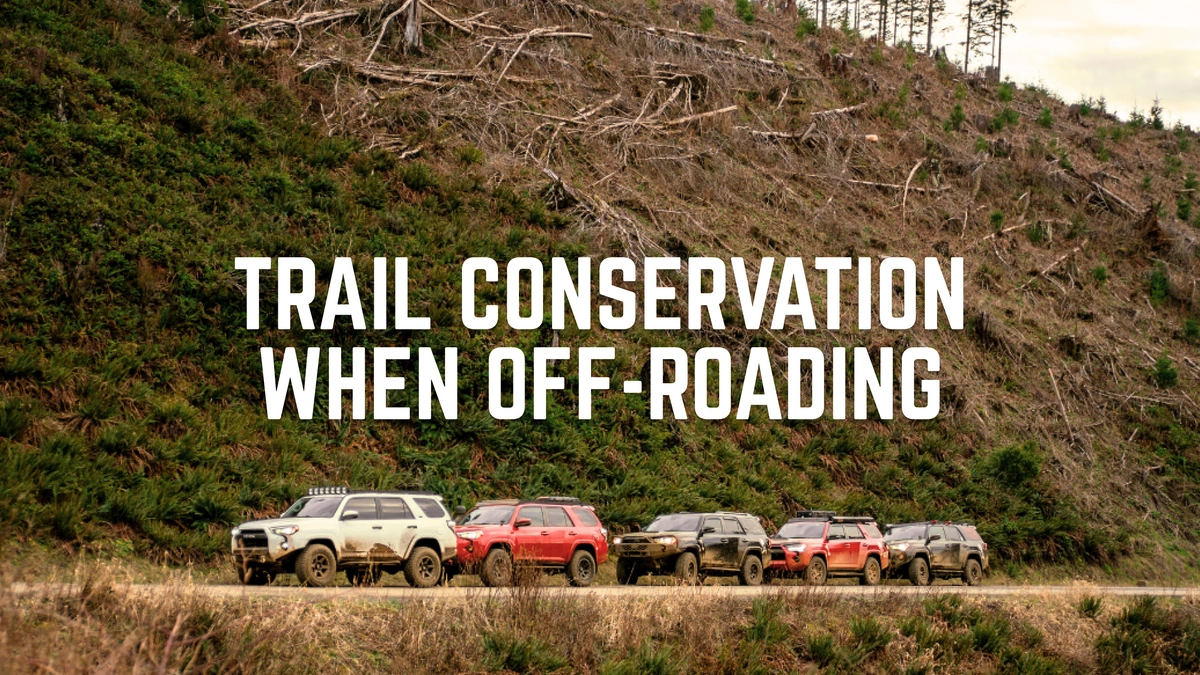
National Clean Beaches Week
Did you know National Clean Beaches Week is from July 1st to July 7th? This week is a great chance to celebrate and enjoy your local beaches!
To mark the occasion this year, we want to share some tips on how to enjoy off-roading on the beach safely and responsibly. We'll also discuss various ways you can contribute to protecting and preserving your local beaches.
We’ve also created a quick guide featuring some of our trail guides for the best beach trails nationwide. Let's dive in and explore how we can all do our part to keep our beaches clean and beautiful!
Off-Roading on a Beach
Not many people get the chance off-road out on the beach, so if you are privileged enough to be near a drive-on beach, don’t take it for granted!
But before you head out for a day of beach adventure, you should be ready to encounter various conditions, from soft, deep sand to firmer, packed surfaces. This means having the right recovery gear for when you get stuck because, let’s face it, we all will get stuck at some point.
Some of the gear you will want includes recovery boards, a tow strap, some shackles or D-rings, and a winch if you already have one. And speaking from personal experience, don’t forget your winch remote!
You’ll also want to ensure you drive safely on the sand. While these drive-on beaches do allow cars to travel, you will also want to consider beachgoers, wildlife, and natural obstacles that you may come across. Respect any posted signs and guidelines, and always prioritize safety for yourself and others.
Keeping Your Beaches Clean
Enjoying the beach is one thing, but you also have to remember to do your part and keep it clean.As we celebrate National Clean Beaches Week, we want to remind everyone of how delicate our local beach ecosystems are.
If you want to continue enjoying these areas, it’s important that you do your part in not leaving any trace behind after your visit. Here are a few ways you can do that.
-
Pack Out What You Pack In: Always take your trash with you when you leave the beach. Bring a bag specifically for collecting your waste and any other litter you might find along the way. If you find any trash around you, pick it up as well.
-
Participate in Cleanups: Join local beach cleanup events. These events are a great way to give back to your community and make a tangible difference. Many cleanup events are posted on social media, so make sure to check with your local groups.
-
Reduce Plastic Use: Minimize the use of single-use plastics, which are a significant source of beach pollution. Opt for reusable containers, bags, and bottles to reduce your environmental footprint.
-
Respect Wildlife: Avoid disturbing wildlife and their habitats. Keep a safe distance from animals and refrain from feeding them.
Gearhart to Warrenton - Along the Northern Oregon Coast
If you're planning to explore the Oregon coast, this route offers the longest stretch accessible to vehicles. Spanning just over 18 miles, it features several entry points for beach exploration. For those interested in local history, don't miss the Peter Iredale, a four-masted steel barque that ran aground on October 25, 1906, while heading to the Columbia River. The ship's wreckage is still visible at low tide, making it a must-see landmark!
Jeep Beach
The Jeep Beach Parade is a 10 mile stretch of beach in Daytona Beach, FL. Each spring, this route hosts thousands of Jeeps congregating for the annual Jeep Beach event. Here you will find thousands of Jeeps participating in the parade that spans the entirety of the beach. But come prepared as you will need to show proof of permit before entering the beach.
Bolivar Peninsula
This route will take you down over 24 miles of drivable beach access along the Texas coast. You’ll fiend that this area is divided up into 5 ares, Port Bolivar Beach on the western edge, Crystal Beach comprising more than a third of the overall length, then Caplan and Gilchrist beach areas, followed by the beach along High Island on the eastern side.
While much of this trail can be driven in 2WD, you’ll find that some areas have larger washouts and softer sand which may require 4WD and possibly higher clearance.
You will need a permit to drive on this beach.
Lost Highway 87
This trail features mostly packed sand, some soft sand, and occasional mud, with heavy erosion narrowing parts of the beach. While 2WD vehicles can navigate most of the beach if soft sand and washouts are avoided, 4WD may be needed in certain areas.
Before you decide to explore this beach, which runs along McFaddin National Wildlife Refuge, you should know that it is poorly marked due to storm damage, and federal officers monitor off-road vehicles during high tides as there is a strict prohibition on driving on vegetation or dunes.
It’s important to note that because of the delicate ecosystem, a speed limit of 15mph must be followed.
Follett's Island Beach
Follett’s Island Beach is a great hidden gem for those in the Houston area. Not only is it relatively quiet compared to other local beaches, you can also camp on the beach year round if you are looking for an overnight trip.
Or if you are planning on just doing a day trip, you’ll enjoy the 10 mile stretch of beach access where you can hand out for the day, do some kayaking, or even catch some fish.
Surfside Beach
Surfside beach is a one-way route that ends at the Bluewater Highway and the Gulf of Mexico. Depending on the time of year you go, you may need 4WD because the sand may be a bit softer and deeper. But for most of the year, having 2WD is sufficient. And don’t forget to pick up your permit to be able to enter the beach, as it’s required.
Quintana Beach
Quintana Beach is a 2 mile stretch of beach located in Texas. This beach is a bit quieter tha most of the other local beaches, making it a great option for a day trip.
While many 2WD vehicles can pass through this beach it’s always best to have 4WD especially as the season changes. It’s also important to note that starting in May until the enf of summer, it is Sargassum Seaweed season. The beach is covered in 1-2 feet of seaweed during this time causing it to be impassable to all vehicles. Always make sure to check conditions before you head out!
Bryan Beach
Next to Quintana Beach you will find Bryan Beach. Bryan beach is right over 3.5 miles of beach access that can be easily traveled by 4WD. If you have a 2WD vehicle you may be able to drive along the beach so long as the conditions are ok and you don’t drive in the softer sand.
So long as the tide permit you can drive to the most western edge where you will find tons of fishing opportunities and some camping spots at the mouth of the Brazos River. If you are interested in bringing a piece of the beach home with you, you will find tons of driftwood along the beach that can be collected.
Matagorda Beach
Matagorda Beach is one of the longer stretches of beach at just over 48 miles, perfect for a day trip or an overnight campspot along the coast. You’ll find that there is so many activities you can enjoy doing here from fishing, collecting shells, kayaking and paddleboarding, and of course just driving along the coast in your 4x4.
There are also many different sites of abandoned ruins of the destroyed piers throughout the shore.
And like all other Texas beaches, this one is considered a highway with a 20mph speed limit. You’ll also see that and driving on dunes or vegetation is illegal; conditions can fluctuate due to weather, tides, and seaweed, so always check local conditions and tide tables before your trip.
Sargent Beach
Sargent Beach is a 15 mile stretch of beach that is located near Houston. While much of the beach is compacted sand, you may still get yourself stuck in softer sand depending on the time of the year.
This beach is also popular among fisherman as there are plenty of opportunities at either end of the beach to do some fishing. However as you continue to go east past all the homes you will find this area is much more secluded. It is part of the San Bernard National Wildlife Refuge, so be very cautious while diving through this area.
Padres Island National Seashore
Padre Island National Seashore features around 60 miles of one-way beach access. This iconic overland trail can be completed in about 7-8 hours, making it a great way trip to do if you’re looking to get some camping down during the weekend.
Here you will find blue water, tons of wildlife including different bird species, sea turtles, and fish, and some awesome sand dunes. Which if you plan on going over, be prepared to be in 4WD and have recovery gear if you get stuck.
For the first 10 miles, you’ll find that the beach is very populated and won’t need the any 4WD. As you continue down the beach to around the 50 mile mark, you will see very few people and will absolutely need 4x4 and high clearance to access this area.
Please remember that this area has many different delicate ecosystems and thus a 15mph speed limit is enforced to ensure that nothing gets hurt or damaged.
Cape Lookout
Along the Atlantic Ocean you will find this almost 36 mile stretch of pristine and undeveloped beach access.
Unlike other beaches across the US, to access Cape Lookout you need to take a small ferry that runs only a few times a day. This ferry will bring you to beach where you can spend the day camping, fishing, bird watching or just hanging around. But you should know that from one end to another it will take the whole day so map out your trip accordingly.
This beach also features plenty of historical sights such as the local lighthouse and the historical village that was once home to troops waiting to head overseas during World War II.
Oceano Dunes SRVA (aka Pismo Beach)
Located in southern California, you’ll find the Oceano Dunes SRVA, aka Pismo Beach. This is actually the only area in southern Califronia that you can drive on the beach.
With about 700 acres along the Pacific shore, Pismo Beach is divided up into different sections. You’ll find that some areas are dedicated to street-legal vehicles and the southern end of the beach allow for OHVs. If you plan on heading to the sand dunes, you must have a flag on your vehicle to alert others that you are there.
If you’re planning on off-roading your 4x4, there are a few things to remember. Starting with, bring all of the necessary gear to recovery and air up/down. The sand will be soft in some areas so you want to ensure you have traction to get through it.
Another thing to consider is the tides. You will be at the sea level so you want to make sure you are keeping track of the tides to avoid getting washed away. If you want to play in the water you can, the waves tend to be small moderate in size, so surfing may not be the best.
And finally the beach closes at sunset so make sure you leave before then. There is also an increasing pressure to close Pismo Beach to vehicle traffic. Please do what you can and clean up after yourself and others.
Boca Chica Beach
You will find Boca Chica Beach, an almost 8 mile beach access, along the coast of Texas.
While this isn’t the longest beach trail in Texas you do get a few cool perks for visiting this area. One of which is a up-close view of the SpaceX control center and launch bads. Then once you’re on the beach you will have access to the Rio Grande River as it empties into the Gulf of Mexico, on the southern tip
For the most part, 2WD is adequate to travel this beach, but as conditions get worse you will need to engage into 4WD. And always check the tide schedule to make sure that the beach is open to public access.
Crowley Lake Trail (East)
Crowley Lake Trail isn’t so much of a beach on the coast but does still feature a beach along Crowley Lake. Here you will find a clear blue water with white sand and a majestic view of the mountains behind.
The trail itself is a fairly easy smooth dirt road that is just under 7 miles and is open only for day use, meaning there is no camping allowed.
Any stock 4x4s can accomplish this trail, however if you are looking to do the smaller obstacles, come prepared with the right modifications for extra clearance.
Long Beach (WA)
At just over 15 miles, Long Beach is the World’s longest driveable beach in Washington state. This beach is perfect for a day trip with the family but be prepared to experience rain and gloomy weather, because yes this weather still happens at the beach.
There are also plenty of attractions to visit in the town as well as neighboring cities and beaches.
Shale Beach
Shale Beach, located in Michigan, is a 2 mile stretch of pebbled beach that requires you to travel through a moderately hard trail for access.
Once you get to the beah you will have views of Lake Huron and Canada in the distance, making it a perfect spot to stop for lunch or spend the night.
The trail itself it’s super hard, however you will experience an area with deep mud and some rocky terrain so be prepared with the right setup and gear.
Six Mile Beach Trail
Lahontan State Recreation Area, created in 1905, offers 69 miles of shoreline with popular activities like boating, fishing, water skiing, and horseback riding. The west shore features year-round camping for $20 per vehicle per night, with primitive beach camping allowed outside day-use and boat ramp areas.
If you plan on exploring the area, keep your eyes out for bald eagles, wild horses, bobcats, foxes, and deer share the park with a variety of birds.
The trail to the beach varies with compacted dirt, mud, and sand, generally safe to be traveled by 4WD in dry weather, but be advised for deep sand and potential flash flooding, making the trail challenging during wet conditions.
Mustang Island Beaches
Mustang Island offers a unique beach experience in Texas. The northern section, managed by Port Aransas, attracts RV campers, while the southern section is popular with spring break enthusiasts enjoying Corpus Christi's well-maintained beaches. Both areas provide an excellent opportunity for newcomers to off-roading to take any vehicle off-road while staying close to the city.
You must purchase a beach parking permits to park along the beach. These cost $12.
If you’ve never had the chance to do some off-roading out on the beach, it’s an absolute must-do. Not only do you get some beautiful views, but it also challenges you to drive through different terrain.
Make sure to check out our trails if you’re in the area. Or if you frequent any beaches that aren’t on this list, apply to write a scout route for your trail and be featured in next year’s edition!


